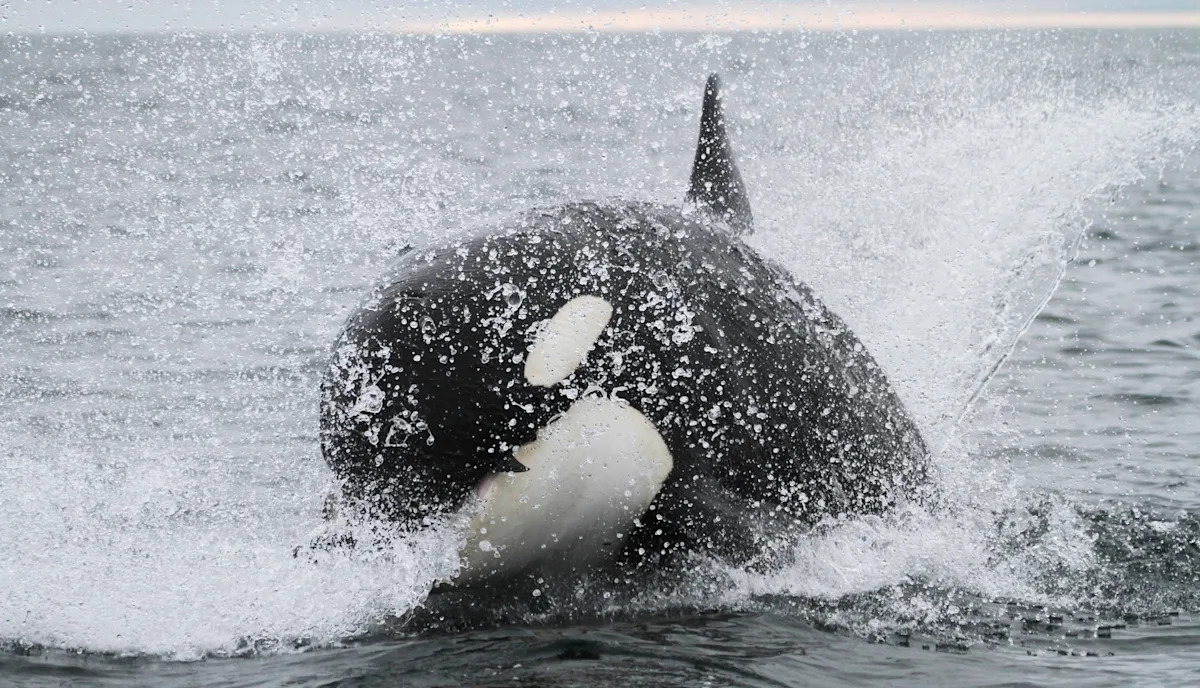Despite being known as one of the most formidable apex predators on the planet, great white sharks appear to be getting overmatched by killer whales off the coast of Mexico. Scientists are now considering how the development could cause untold damage to the region’s marine ecosystem.
What’s happening?
As reported by The New York Times, juvenile great white sharks appear to be under attack from orcas in the Gulf of California. Until recently, most known interactions between the two species have involved large white sharks that orcas have targeted for their large, fatty livers.
However, scientists are now observing an increase in more surprising events. Killer whale attacks on young white sharks are on the rise. While not unheard of, these attacks are something that have been primarily recorded off the coast of South Africa.
In a study first published in the journal Frontiers in Marine Science, the team of researchers used drone footage to show that killer whales employed similar, deliberate tactics during each attack, likely to paralyze the juvenile sharks, which makes it easier for them to eat their livers.
“Orcas are hunting machines,” said Erick Higuera, a marine biologist and co-author of the study in an interview with NewScientist. “They are like snipers … they use specific hunting strategies, very specific ones depending on their prey.”
Why are orca attacks on juvenile white sharks important?
Perhaps more surprisingly, after removing the sharks’ livers, the whales shared them among pod members, including calves. Further analysis suggested that the attacking whales belong to a pod already known in this area, which may specialize in hunting sharks.
“The same organ is targeted, but the techniques differ,” said Alison Towner, a marine biologist at Rhodes University.
Killer whales hunting and killing juvenile white sharks can present a significant shift in the region’s marine ecosystem. This can cause great whites to avoid areas where orcas hunt, which could result in a substantial increase in the populations of the sharks’ prey, creating a ripple effect.
This disruption can lead to other marine animals becoming more abundant. While they may sound like good news, the removal of an apex predator like great white sharks can lead to the imbalance of the entire food web. This could have devastating impacts on populations of vulnerable species reliant on limited food sources. Over time, this could lead to economic losses for the fishing industry.
What could be causing the increase in orca attacks on great white sharks?
Taylor Chapple, a marine ecologist at Oregon State University, described the reason behind the orca’s taste for great white shark livers. “It’s the only thing that’s really worth it for their time,” said Chapple. “It’s sort of like they’re going for the cheeseburger surrounded by a bunch of celery.”
Rising global temperatures could also be triggering a devastating chain of events for juvenile white sharks. Warmer ocean waters may be forcing young white sharks to migrate northward along coastlines as they seek their preferred temperature range. Unlike adult great white sharks, juvenile sharks lack the body mass to maintain their body temperature in colder water, making them dependent on finding suitable habitats.
“Once they’ve encountered orcas and survived, they tend to avoid those coastal areas altogether,” Towner said of white sharks. However, juvenile sharks may lack the instinct to avoid regions populated by Orcas as they seek warmer waters.

